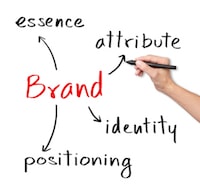5 Key Concepts to Bolster Your Hospital Brand

To be fair, branding is a difficult task, and hospital branding is especially challenging for many reasons. At the top of the list, the mission of hospital branding is to create awareness before an individual has a need...or even any interest in the largely unpleasant idea of “going to the hospital.” What’s more, resources are limited, but demands and expectations are many and varied.
Further, the brand and branding message may be called upon to embrace multiple locations, a wide range of service lines, and it needs to be a constant factor in the turbulent, constantly changing world of healthcare. Did we mention the new era of “empowered and engaged” patient consumerism, or the intensity of competition?
For these and other reasons, our free library contains “how-to” articles about creating a powerful and differentiating brand. In addition, here are several key concepts that can smooth some of the bumps on this rocky road and bolster the effectiveness of your hospital brand.
Clearly and uniquely differentiate. In an environment of mergers, acquisitions, rollups, and the dynamics of healthcare reform, the brand that successfully stands out in the mind of the consumer/ customer/ patient will have the strongest basis for success. Be willing to challenge your current branding message for needed revisions or replacement when market conditions have changed.
Promise and deliver. An effective brand is the singular idea that you own inside the mind of a prospective customer. It is a distinctive difference, backed by consistent performance.
Internal, external, everything. Place your brand at the core of your internal organizational culture, express the promise externally, and see that the idea connects with or is expressed by everything that the organization does. A brand is the customer’s total experience.
A logo and tagline do not make a brand. Branding would be a lot simpler if a distinctive design element was all that was required. The visual logo is important and helpful, but it’s simply a reminder about the larger, all-inclusive brand promise. Think of it as the mark of meaningful values.
Be in it for the long run. Some changes happen quickly. Expectations often have a short short fuse. But you need a five-year timeframe to effectively build a brand. Frame organizational and leadership expectations to expect a gradual awareness curve.
What would you add to this list? How does your branding effort stack-up? For related reading, see: The Top Seven Reasons Healthcare Branding Means Business and Branding: How to Keep From Being Plain Vanilla.
Related Articles:
Thinking Forward: Taking Your Hospital Brand to the Next Level
The Bewildering Business of Branding Decoded
How to Create a Strong Hospital Brand that Attracts the Modern Consumer
Be Willing to Ignore Someone and Other Healthcare Branding Advice









